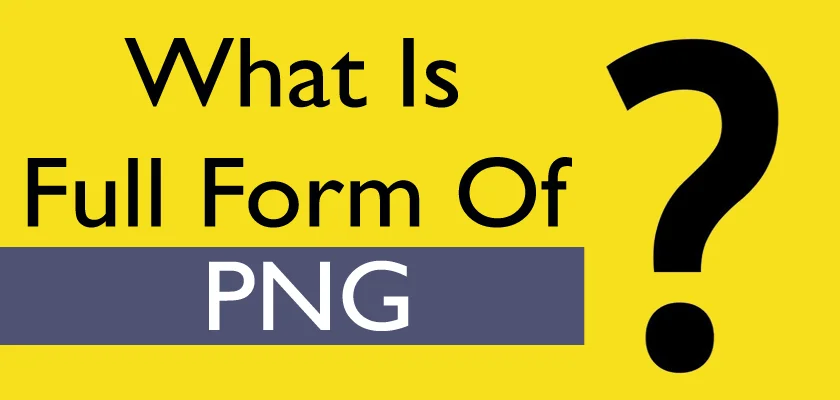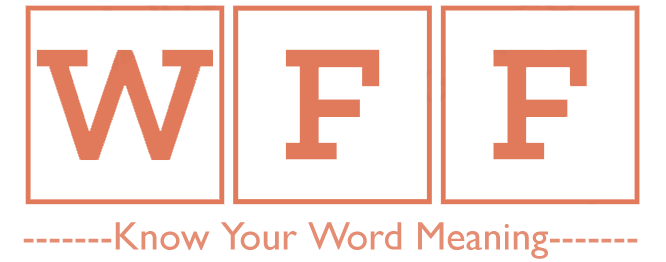Do you know what is the PNG Full Form? PNG stands for Portable Network Graphics, which is a file format used for compressing images. This format has gained widespread popularity and has almost replaced the use of GIF, which was used earlier. The advantage of using PNG is that it provides a portable, unencumbered, well-compressed, and well-specified standard for image files, making it high in demand in the current market.
Table of Contents
What is the PNG Full Form?
PNG – Portable Network Graphics
Evolution of PNG
The evolution of PNG dates back to the early part of 1995. The primary reason for developing PNG was to overcome the colour limitation of GIF, which only supported 256 colours. PNG has its own file extension, “.png.” It is considered a superior format for images with minimal content since the images are less “bitmappy.” It is solely used for pictures on the web and not for print images. For photographs, JPEG is preferred over PNG since it has a larger record. The animated designs from PNG are MNG and APNG, which are supported by almost all kinds of browsers.
Features of the Format Having PNG
PNG has several features that have contributed to its success as a format. One such feature is the ability to control the amount of transparency, allowing for greater flexibility in image design. Additionally, PNG supports interlacing, making it faster to develop than the GIF format. Another significant advantage of PNG is its support for Gamma correction, allowing for the adjustment of the image’s brightness as per the requirement.
PNG allows images to be saved using true colour, which supports up to 16 million colours. Additionally, PNG supports palette and greyscale formats, similar to the formats used by GIF. Overall, PNG offers a reliable and versatile image format, making it a popular choice in today’s digital market.
Advantages of PNG
The full-form PNG format has several advantages over JPEG. This is as follows-
- The PNG format also supports transparency.
- PNG file supports multiple colours and patterns
- Compression is lossless in the case of PNG
- PNG also supports the compression of digital images.
- PNG helps in creating graphs, comics, blueprints, charts, drawings, logos, etc.
- The PNG format has solid colours and sharp details which makes it suitable for editing images.
- Scanning of text such as letters, journals etc. can be done easily using PNG.
Disadvantages of PNG
- Large file size: PNG files are not great for detailed or oversized images as they can create a large file size, which can take up more storage space.
- File size larger than JPEG: Sometimes, PNG files can be larger than JPEG files.
- No animation support: Unlike other formats such as GIF and APNG, PNG files cannot be used to create animated graphics.
- Limited browser support: The PNG format may not be supported by all web browsers, which may limit its use.

Uses of the PNG Format
You can use PNG format for the following types of activities-
- Creation of charts, logos, graphs, blueprints, etc.
- Scanning of text like articles, letters, newspapers, etc.
- Creation of photos with line art e.g., drawings, comics, illustrations, etc.
- Saving photoshopped images etc.
Other Full Forms of PNG
The acronym PNG has various meanings in different fields and contexts, including:
- Portable Network Graphics: In the realm of file types, electronics, and bitmap graphics, PNG stands for Portable Network Graphics. It is a file extension used to store bitmap images.
- Papua New Guinea: In ISO country codes, PNG represents Papua New Guinea, an island country located above Australia.
- Pipeline Natural Gas: In chemistry, PNG stands for Pipeline Natural Gas, which is used to transfer gases from one field to another.
- Paranagua: In airport codes, PNG is the code for Paranagua, a place in Brazil.
- Prime Number Generator: In mathematics, PNG refers to Prime Number Generator, a tool used to generate n natural prime numbers.
- Proportional Navigation Guidance: In military and defence, PNG stands for Proportional Navigation Guidance, a term used in air-target missiles.
Conclusion
PNG primarily stands for Portable Network Graphics, it has other meanings in various fields and contexts. Nevertheless, its benefits over other file formats like GIF and JPEG have made it a popular choice among users. PNG is a powerful image format that offers numerous benefits over other formats like GIF. With its flexible features and well-defined standards, PNG has become an essential tool for designers and developers worldwide. Whether it’s for web graphics or digital media, PNG is a reliable and efficient choice for image compression.
FAQs – What Is The PNG Full Form?
Q.1. What is the PNG Full Form?
Ans. The PNG Full Form is Portable Network Graphics.
Q.2. What does PNG stand for?
Ans. PNG stands for Portable Network Graphics.
Q.3. What is PNG used for?
Ans. PNG is a file format commonly used for storing and transmitting images. It supports lossless compression, making it ideal for graphics that require high-quality and detailed images.
Q.4. How does PNG differ from other image formats?
Ans. PNG differs from other image formats, such as JPEG or GIF, by offering lossless compression, meaning it retains all the original image data without sacrificing quality. It also supports transparency and a wide range of colour depths.
Q.5. What is the advantage of using PNG?
Ans. The advantages of using PNG include its ability to retain high-quality images, support for transparency, and the ability to display images correctly on different backgrounds or layers.
Thanks for reading What is the PNG Full Form? Bookmark our website Whatisfullform.com to know or read our collection of full forms.


